Metal vs. Plastic Barricades
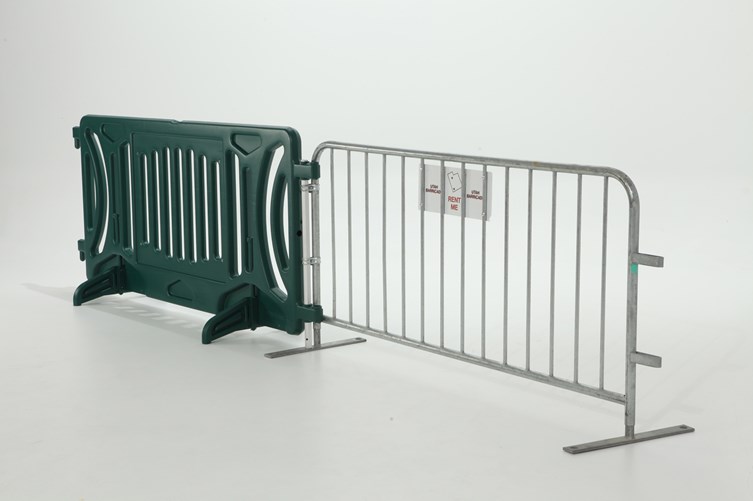
If you are looking into buying crowd control barricades for an event or venue, there are many options to choose from. The biggest question many people have is how do metal and plastic barricades compare? The two barricade styles are both commonly used, but which one is better? If you look at the advantages of plastic barricades over metal barricades, you can see that plastic barricades are safer, more durable, and overall a better choice.
Advantages of Plastic Barricades
Safer
One of the main advantages of plastic barricades is they are safer to interact with in general. Plastic barricades are manufactured to be lightweight yet sturdy, while metal barricades are heavier and more easily tipped over. In once instance in Memphis, chaos ensued when two metal crowd control barriers fell over in the street. The loud noises caused by the barriers were thought by many pedestrians to be gunshots and people started fleeing in all directions.
Another safety concern associated with metal barricades is sharp corners and edges. If not properly interlocked, these sharp metal corners are exposed and lead to greater chances of injury, especially with large crowds either walking by or pressing up against the barricades. At one sporting event in Kansas City, an exposed corner on a metal barricade led to a fatal crash. The barricades at the event were not properly interlocked and when a cyclist crashed into one, he hit his forehead on the sharp edge. Plastic barricades in this situation could have meant a completely different outcome.
These safety problems with metal barricades are solved with plastic barricades. Production staff can carry multiple barricades at a time without worrying about cuts and patrons can interact with them without paying too much attention to where on the barricade they are leaning. Because of the way the feet are designed and the ease with which barricades are interconnected, they don’t tip over easily, and are far less harmful if they do. Based on safety alone, plastic barricades are the better choice.
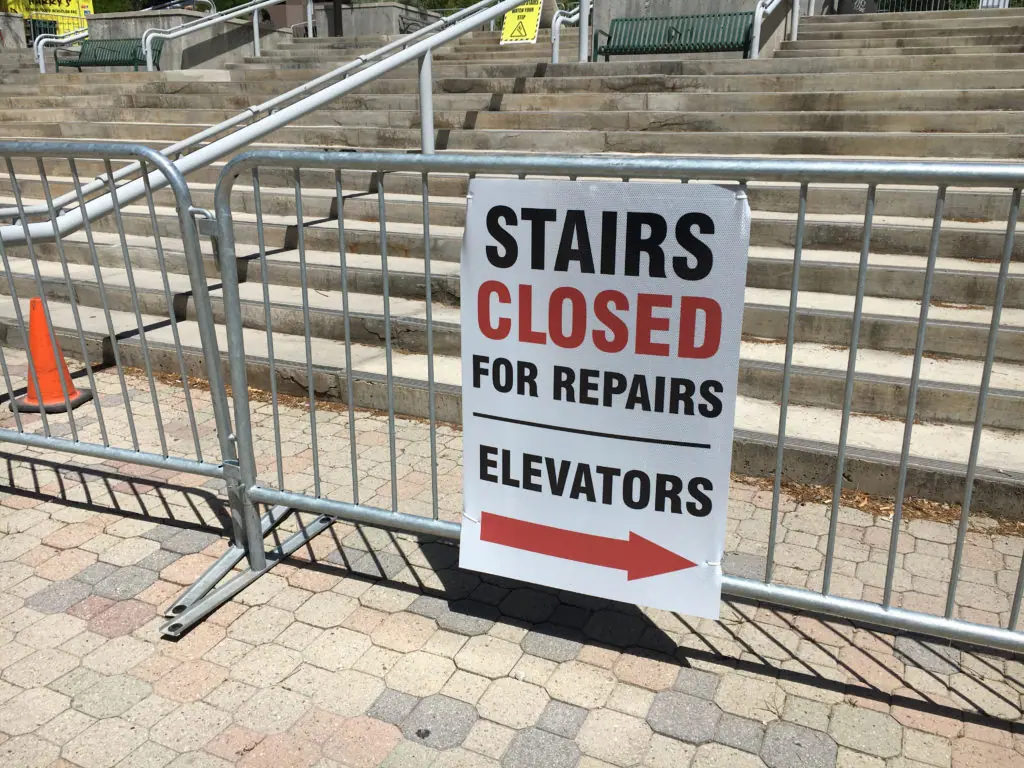
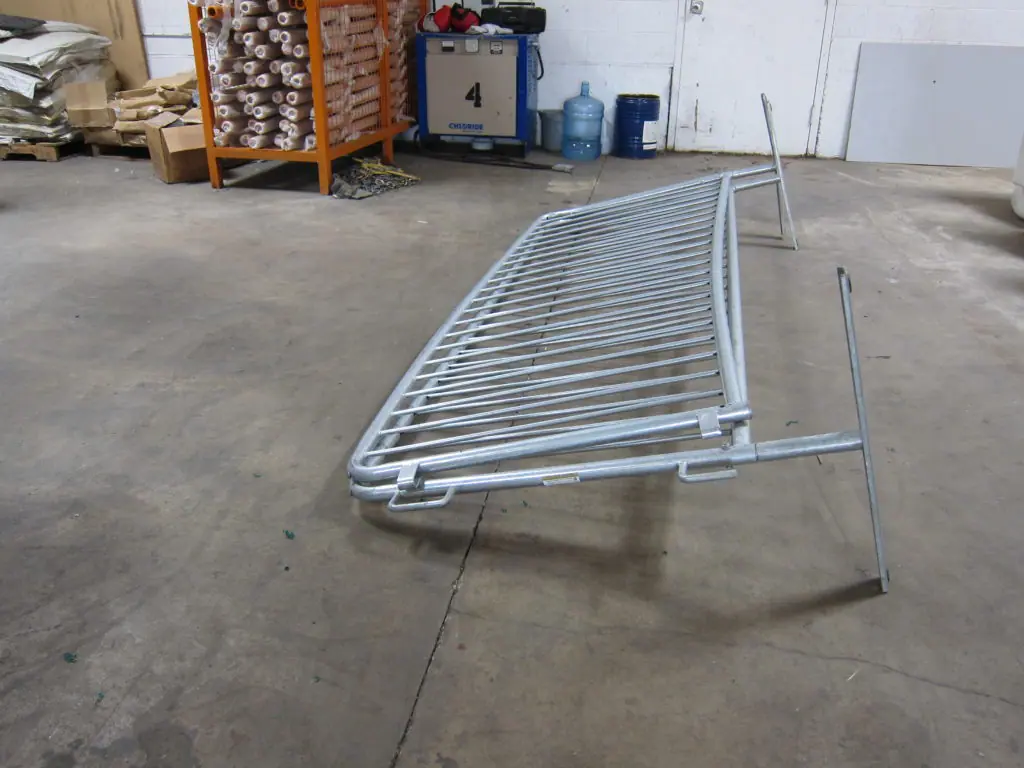
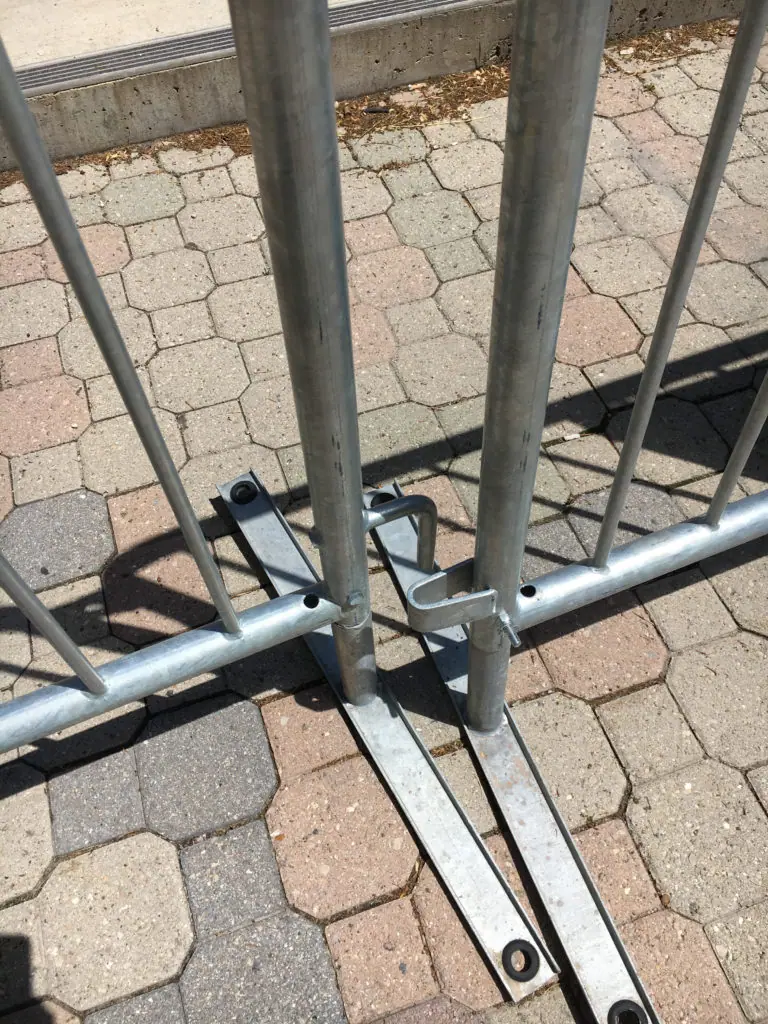
More Durable
When comparing metal to plastic barricades, another aspect to look at is durability. Plastic barricades are made of polyethylene, which doesn’t rust or erode. This high-quality plastic is resistant to impact and punctures and the barriers are 100% recyclable. They also have UV protection added during the manufacturing process, which means their bright colors won’t fade over time.
On the other hand, metal barricades can rust when used frequently outdoors. They can also end up bending, making the feet less stable and the connection points impossible to line up. When zip ties are necessary just to create a continuous line, you know the product has not been designed to last. The feet of metal barricades are especially susceptible to bending and breaking so it’s commonly necessary to replace them, which can end up outweighing the initial low price of metal barricades.
Easily Visible
Another advantage of plastic barricades over metal barricades is greater visibility. Plastic barricades are available in a variety of different bright colors. This makes the barriers more easily visible, especially at night or at events that are poorly lit. On top of the increased visibility, you can choose colors that match your branding, creating a better atmosphere overall. If you want to attach any signage to your barriers, plastic barricades offer a built-in display panel. The expensive covers that fit over metal barricades are unnecessary.
Less Labor Intensive
One of the other issues with metal barricades is the time and manpower it takes to set them up. Metal barricades are heavy and cumbersome, meaning it takes a lot of muscle to move them. They are also difficult to store because of their size and shape. Loading and unloading are big factors for the total time it takes to set and strike an event or gathering.
Compare this to plastic barricades which are equipped with swiveling feet and stack flat when they’re not in use. They take less space to store and transport. They’re also lightweight, which means one person can carry 1-2 at a time and two people can carry 2-3.
More Stability
There are two common types of feet on metal barricades: bridged or flat. Metal barricades with bridged feet are better on uneven ground, however the bridged feet are tripping hazards. The flat feet on the other hand, are not very stable, meaning there are drawbacks to whichever option you go with. And again, these feet often break, meaning you may have to replace them more than once.
Plastic barricades are built to be sturdy but can also be ballasted with water or weighed down with sandbags in especially windy conditions. For more permanent applications on concrete or pavement the barricades can be staked directly into the ground through the extra flag holes on each end. On softer ground like dirt or grass the barricades can also be staked in place and then easily removed.
You Choose!
We’ve covered the advantages of plastic barricades and we think the choice is obvious in the metal vs. plastic barricade showdown. Plastic barricades offer stability while still being lightweight and durable. You can choose various colors for branding and visibility, and plastic barricades are an overall safer option. If you are looking for crowd control barriers for your next event, OTW Safety has a variety of choices available. You are bound to find the perfect barricade for your event. Contact us today if you have any questions or would like to request a quote!
Metal to Plastic Adapter
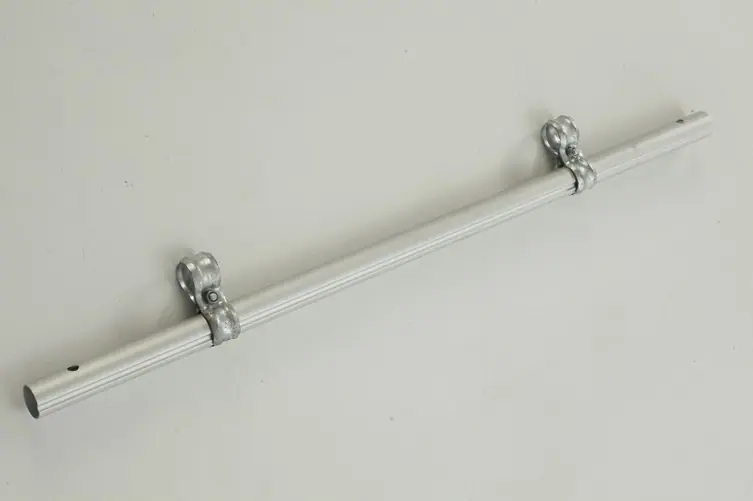
We realize that you may already have a stock of metal barricades, and making the switch to all-plastic barricades may not be possible. If you’re in this situation, the OTW metal to plastic barricade adapter is the perfect solution. The adapter is a small, aluminum piece that makes it easy to create a continuous wall of metal and plastic barricades.


